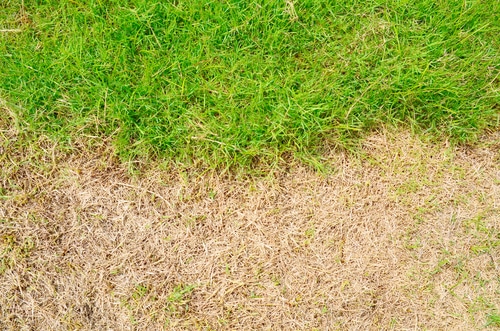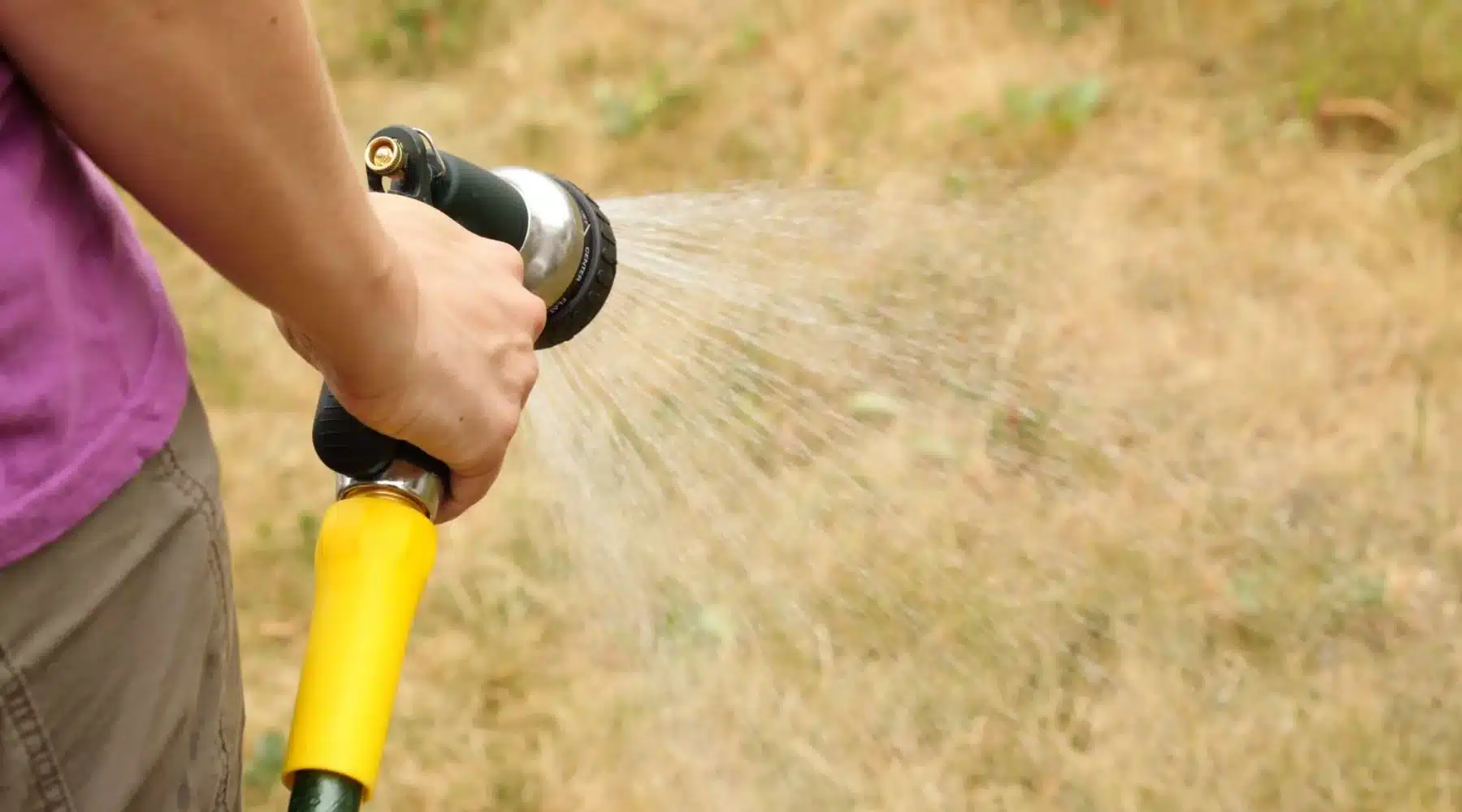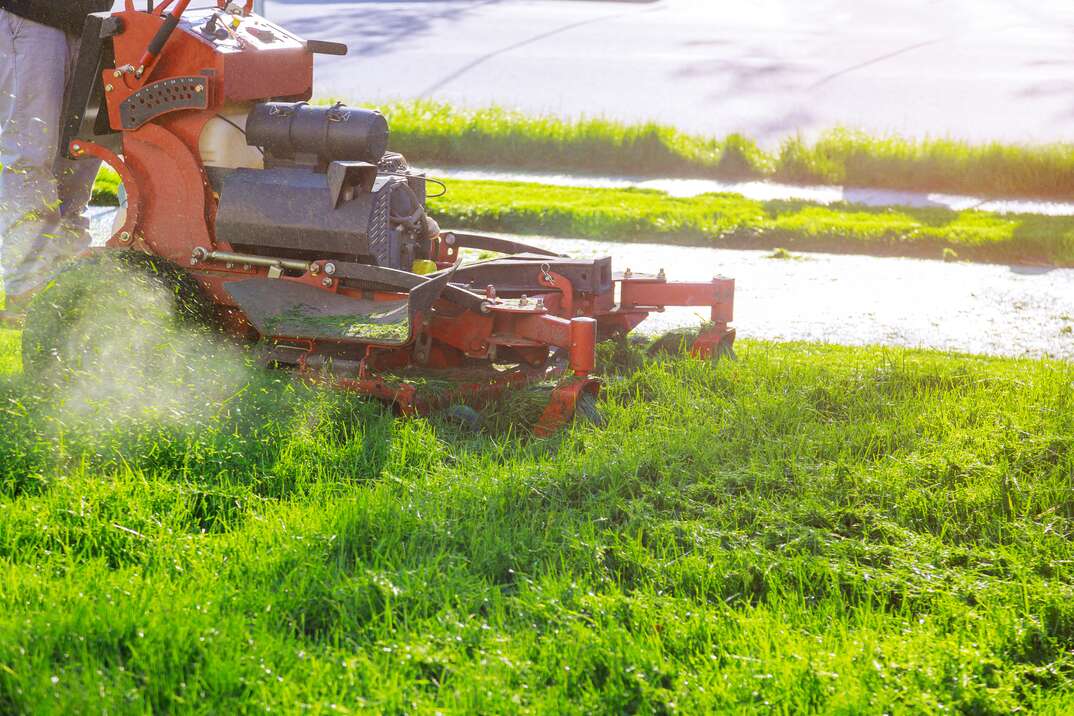The Importance of Watering Dead Grass
Watering dead grass can play a crucial role in reviving it and restoring the health of your lawn. While it may seem counterintuitive to water grass that appears lifeless, proper watering techniques can actually stimulate growth and help bring your lawn back to life.
Dead grass often occurs due to a lack of water, which can lead to dehydration and ultimately result in the death of the grass. By providing the necessary moisture through watering, you can help rehydrate the grass and promote new growth.
Watering dead grass is particularly important during dry spells or drought conditions when natural rainfall is insufficient. Without adequate water, the grass roots become weak and unable to absorb nutrients from the soil, leading to further deterioration.
Additionally, watering dead grass can help flush out any accumulated toxins or chemicals that may be inhibiting its growth. This can be especially beneficial if your lawn has been exposed to pesticides or other harmful substances.
However, it is important to note that not all dead grass can be revived through watering alone. In some cases, the grass may be too far gone or affected by other underlying issues such as disease or pests. It is essential to assess the condition of your lawn and identify the root cause of the problem before attempting to revive the grass.
In conclusion, watering dead grass can be an effective method to revive and restore the health of your lawn. By providing the necessary moisture, you can rehydrate the grass, promote new growth, and flush out any toxins. However, it is crucial to assess the condition of your lawn and address any underlying issues to ensure successful grass restoration.
Signs of Dead Grass
When it comes to maintaining a healthy lawn, it is important to be able to identify the signs of dead grass. Dead grass can be easily distinguished from healthy grass by its appearance and texture. Here are some common signs to look out for:
1. Discoloration: Dead grass often appears brown or yellow, indicating a lack of chlorophyll and nutrients.
2. Dryness: Dead grass feels brittle and dry to the touch, as it has lost its moisture content.
3. Lack of Growth: Dead grass does not grow or regrow, even with proper care and maintenance.
4. Thinning or Bald Spots: Dead grass may leave behind patches of bare soil or thin areas where healthy grass used to be.
5. Weed Infestation: Dead grass provides an ideal environment for weeds to take over, so if you notice an increase in weed growth, it may be a sign of dead grass.
It is important to note that these signs may also be indicative of other lawn issues, such as drought stress or disease. Therefore, it is crucial to properly diagnose the problem before taking any action.

III. Understanding the Causes of Dead Grass
Dead grass can be caused by a variety of factors, and understanding these causes is essential in order to effectively revive your lawn. Here are some common reasons why grass may die:
1. Lack of water: Insufficient watering is one of the primary causes of dead grass. When grass doesn’t receive enough water, it becomes dehydrated and eventually dies off.
2. Overwatering: On the other hand, overwatering can also lead to dead grass. Excessive moisture can drown the roots and create an environment for diseases and pests to thrive.
3. Poor drainage: If your lawn has poor drainage, water may accumulate and create waterlogged conditions that suffocate the grass roots, leading to their death.
4. Compacted soil: Soil compaction can prevent water and nutrients from reaching the grass roots, causing them to wither and die.
5. Nutrient deficiencies: Grass requires essential nutrients like nitrogen, phosphorus, and potassium to thrive. If your soil lacks these nutrients, the grass may become weak and eventually die.
6. Disease and pests: Various diseases and pests can attack grass, causing it to die. Fungal infections, insect infestations, and weed competition can all contribute to the death of your lawn.
By identifying the specific cause of your dead grass, you can take appropriate measures to address the issue and revive your lawn. Whether it’s adjusting your watering schedule, improving drainage, or addressing nutrient deficiencies, understanding the underlying causes is crucial for successful grass restoration.
IV. Preparing the Lawn for Watering
Before you start watering dead grass, it is important to prepare your lawn properly. This will ensure that the water reaches the roots of the grass and promotes healthy growth. Here are some steps to follow:
1. Remove any debris: Clear your lawn of any leaves, twigs, or other debris that may be covering the grass. This will allow the water to penetrate the soil and reach the roots more effectively.
2. Aerate the soil: If your lawn has compacted soil, it may prevent water from reaching the roots. Use a garden fork or aeration tool to create small holes in the soil. This will improve water absorption and promote better root growth.
3. Test the soil: It is important to know the pH level and nutrient content of your soil. You can purchase a soil testing kit from a garden center or send a sample to a laboratory for analysis. Adjusting the pH level and adding necessary nutrients will create a favorable environment for grass growth.
4. Remove thatch: Thatch is a layer of dead grass, roots, and other organic matter that accumulates on the surface of the soil. It can prevent water from reaching the roots. Use a thatch rake or a dethatching machine to remove this layer and improve water penetration.
5. Mow the grass: Before watering, make sure to mow the grass to an appropriate height. Cutting the grass too short can stress it further, while leaving it too long may prevent water from reaching the roots. Aim for a height of around 2-3 inches for most grass types.
By following these steps, you will create an optimal environment for watering dead grass. This will maximize the effectiveness of your watering efforts and increase the chances of successfully reviving your lawn.

Choosing the Right Time to Water Dead Grass
When it comes to reviving dead grass through watering, timing is crucial. Choosing the right time to water can significantly impact the success of your grass restoration efforts. Here are some important factors to consider:
1. Morning or Evening: The best time to water dead grass is either early in the morning or late in the evening. During these times, temperatures are cooler, and there is less evaporation, allowing the water to penetrate the soil effectively. Avoid watering during the hottest part of the day, as the water may evaporate before it can reach the grass roots.
2. Wind Conditions: Pay attention to wind conditions when deciding when to water. Strong winds can cause water to evaporate quickly or blow it away from the intended area. It is best to water on calm days to ensure that the water reaches the grass and soil properly.
3. Watering Frequency: It is important to water dead grass consistently but not excessively. Overwatering can lead to shallow root growth and create an environment for diseases to thrive. On the other hand, underwatering can hinder the grass’s ability to recover. Aim to provide enough water to moisten the soil to a depth of 6-8 inches.
4. Soil Moisture: Before watering, check the soil moisture level. Stick a screwdriver or a soil moisture meter into the ground. If it easily penetrates the soil to the desired depth, the soil is adequately moist, and watering may not be necessary. However, if the soil is dry, it’s time to water.
5. Watering Restrictions: Be aware of any watering restrictions or guidelines in your area. Some regions have specific watering schedules or limitations to conserve water. Familiarize yourself with these regulations to ensure you comply while still providing the necessary moisture for your dead grass.
By considering these factors and choosing the right time to water your dead grass, you can maximize the effectiveness of your efforts and increase the chances of successfully reviving your lawn.
Proper Watering Techniques for Dead Grass
When it comes to reviving dead grass, proper watering techniques are crucial. Here are some important steps to follow:
1. Water Deeply: It is essential to water the dead grass deeply to ensure that the water reaches the roots. Shallow watering only moistens the surface and does not provide enough hydration for the grass to revive. Use a sprinkler or irrigation system to evenly distribute the water.
2. Gradual Watering: Instead of watering heavily all at once, it is better to water the dead grass gradually. This allows the water to penetrate the soil slowly and prevents runoff. Watering for shorter durations multiple times a week is more effective than watering heavily once a week.
3. Watering Frequency: The frequency of watering dead grass depends on various factors such as the climate, soil type, and grass species. Generally, it is recommended to water the grass two to three times a week. However, monitor the moisture level of the soil and adjust the watering schedule accordingly.
4. Morning Watering: The best time to water dead grass is in the early morning. This allows the grass to absorb the water before the sun gets too hot, reducing the risk of evaporation. Watering in the evening can lead to prolonged moisture on the grass, increasing the chances of fungal diseases.
5. Avoid Overwatering: While it is important to provide enough water, overwatering can be detrimental to the grass. Excessive moisture can lead to shallow root growth and create a favorable environment for weeds and diseases. Ensure that the soil has proper drainage to prevent waterlogging.
6. Water Conservation: Conserving water is not only environmentally friendly but also beneficial for your lawn. Consider using a rain barrel to collect rainwater for watering your dead grass. Additionally, mulching the lawn can help retain moisture and reduce the need for frequent watering.
By following these proper watering techniques, you can increase the chances of reviving your dead grass and restoring a healthy lawn. Remember to be patient and consistent with your watering routine, as it may take some time for the grass to recover.

VII. Using the Right Tools for Watering Dead Grass
When it comes to watering dead grass, using the right tools can make a significant difference in the effectiveness of the process. Here are some essential tools you should consider:
1. Sprinkler: A good quality sprinkler is crucial for evenly distributing water across your lawn. Look for a sprinkler that provides a wide coverage area and adjustable settings to control the water flow.
2. Hose: A garden hose with a spray nozzle attachment is essential for precise watering. The spray nozzle allows you to adjust the water pressure and pattern, ensuring that the water reaches the dead grass evenly.
3. Watering Can: If you have a small area of dead grass or need to target specific spots, a watering can is a handy tool. It allows you to control the amount of water you apply and direct it precisely where it’s needed.
4. Soil Moisture Meter: A soil moisture meter can help you determine the moisture level in your lawn. This tool is especially useful if you’re unsure whether your grass is receiving enough water. It will guide you in adjusting your watering schedule accordingly.
5. Aerator: An aerator is a tool used to create small holes in the soil, allowing water, air, and nutrients to penetrate deep into the roots. Using an aerator before watering dead grass can help improve water absorption and promote healthier grass growth.
Remember to choose tools that are suitable for the size of your lawn and the specific needs of your dead grass. Investing in high-quality tools will ensure that you can effectively revive your grass and maintain a healthy lawn in the long run.
VIII. Common Mistakes to Avoid When Watering Dead Grass
Reviving dead grass requires careful attention and proper watering techniques. However, there are some common mistakes that people often make when attempting to revive their lawn. Avoiding these mistakes can greatly increase the chances of successfully restoring your dead grass to its former lush and green state.
1. Overwatering: One of the most common mistakes is overwatering the dead grass. While water is essential for revival, excessive watering can lead to root rot and other fungal diseases. It is important to strike a balance and provide just the right amount of water.
2. Inconsistent watering: Another mistake is inconsistent watering. Watering too much one day and then neglecting the lawn for several days can stress the grass and hinder its revival. Consistency is key when it comes to watering dead grass.
3. Watering at the wrong time: Timing is crucial when watering dead grass. Watering during the hottest part of the day can cause the water to evaporate quickly, leaving the grass thirsty. It is best to water early in the morning or late in the evening when the temperatures are cooler.
4. Using the wrong sprinkler: Using the wrong type of sprinkler can result in uneven watering and areas of the lawn being missed. It is important to choose a sprinkler that provides even coverage and reaches all areas of the lawn.
5. Ignoring soil conditions: Neglecting the soil conditions can hinder the revival of dead grass. It is important to ensure that the soil is well-drained and not compacted. Aerating the soil can help improve its condition and allow water to penetrate deeper.
By avoiding these common mistakes, you can increase the chances of successfully reviving your dead grass. Remember to water consistently, at the right time, and in the right amount. Pay attention to the soil conditions and choose the appropriate sprinkler for even coverage. With proper care and attention, your lawn can be restored to its former glory.
IX. Additional Tips for Reviving Dead Grass
Reviving dead grass can be a challenging task, but with the right approach and additional tips, you can increase your chances of success. Here are some additional tips to consider:
1. Aerate the soil: Before watering dead grass, it’s important to ensure that the soil is not compacted. Compacted soil can prevent water from reaching the roots effectively. Use a lawn aerator to create small holes in the soil, allowing water and nutrients to penetrate deeper.
2. Overseed the lawn: If your grass is severely damaged or dead in certain areas, overseeding can help fill in the gaps. Choose a high-quality grass seed that is suitable for your climate and lawn conditions. Spread the seed evenly over the affected areas and lightly rake it into the soil.
3. Apply fertilizer: Dead grass often lacks essential nutrients. Applying a balanced fertilizer can help promote healthy growth. Look for a fertilizer specifically formulated for lawns and follow the instructions for application rates and timing.
4. Monitor watering frequency: While watering is crucial for reviving dead grass, it’s important to strike a balance. Overwatering can lead to shallow root growth and other issues. Monitor the moisture levels in your lawn and adjust your watering schedule accordingly.
5. Consider professional help: If your efforts to revive dead grass are not yielding the desired results, it may be beneficial to consult a lawn care professional. They can assess the condition of your lawn, identify any underlying issues, and provide expert advice on the best course of action.
Remember, reviving dead grass requires patience and consistent effort. It may take several weeks or even months to see significant improvement. By following these additional tips and maintaining a regular lawn care routine, you can increase the chances of successfully restoring your grass to its former lush and healthy state.
